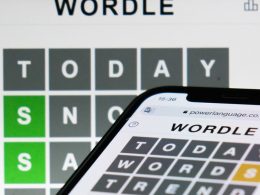When it comes to a simple coin flip, we’ve all been taught that the probability of landing heads is exactly 50%. But is this widely accepted belief really accurate? Let’s delve into the intricacies of this seemingly straightforward game of chance.
The Game of Odds: Testing Your Luck
Imagine a scenario where you and a friend decide to engage in a coin-flipping bet. The rules are clear-cut: flip a coin 50 times, and if tails emerge as the predominant outcome, you owe your friend $10, and vice versa. The coin in question is completely standard, devoid of any gimmicks or tricks. Given this, one might instinctively trust in the 50-50 odds and proceed confidently.
However, before you toss that coin, it’s worth considering the insights of Persi Diaconis. As a distinguished professor of mathematics and statistics at Stanford University, with a background in professional magic, his perspective is invaluable. Diaconis, along with his fellow researchers, unearthed a fascinating truth: most coin-based games of chance aren’t as balanced as they may initially seem.
Probability vs. Physics: Unraveling the Complexity
Diaconis asserts that a coin toss isn’t solely about probability. It involves a significant interplay with physics, contingent on the characteristics of the coin itself and how it’s tossed. Astonishingly, if a coin starts in a heads-up position, it’s highly likely to land in the same orientation. Diaconis has even achieved the feat of flipping a coin to produce heads ten consecutive times.
This phenomenon extends to spinning a coin. Few coins boast perfect symmetry; this inherent asymmetry leads to the weighted favoring of one side, causing it to land face-up more frequently. Additionally, certain magicians employ shaved coins, further tipping the scales. Consequently, it’s evident that the odds are not evenly split.
Diaconis aptly summarizes the situation: “Coin tossing is pretty close to fair,” he concedes, “but it’s not 50/50.”
Proceed with Caution: Insights for Betters
Armed with this newfound understanding, it’s advisable to exercise prudence when engaging in a bet reliant on a coin toss. Recognizing the blend of physics and probability, you can approach the game with a clearer perspective. The odds, as Diaconis suggests, are closer to 51% in favor of the starting side.
In conclusion, next time you find yourself on the precipice of a coin-flipping bet, remember that the truth behind the odds is far more nuanced than the oft-cited 50-50 split. By acknowledging the influence of physics, the characteristics of the coin, and the technique employed in the toss, you can make a more informed wager.
Thank you for exploring this intriguing facet of probability with us.
By thoroughly examining the interplay between probability and physics in a coin flip, we’ve unveiled a deeper understanding of this seemingly straightforward game of chance. Armed with this knowledge, you can approach such bets with newfound insight and prudence. Remember, while the odds may not be precisely 50-50, they’re remarkably close. So, proceed with cautious optimism in your future coin-flipping endeavors.
See Also: Granite Countertops: A Timeless Addition To Your Home











